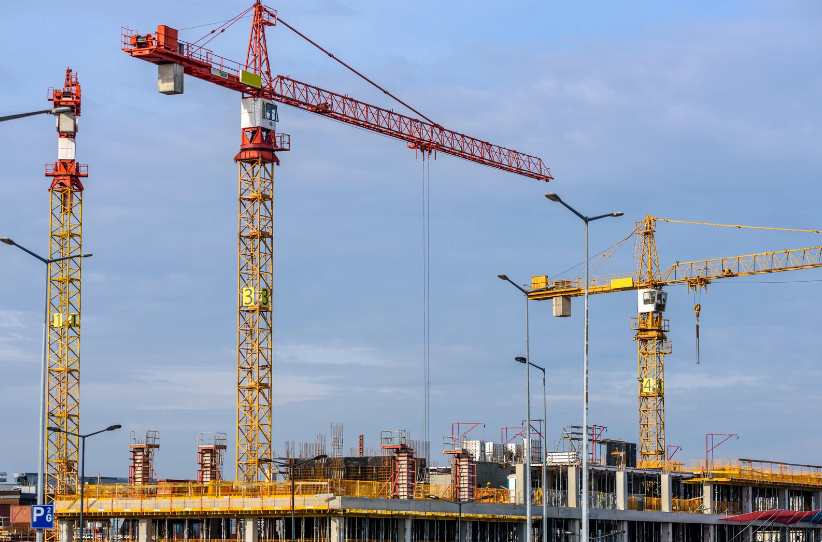The Construction Industry in Montenegro and Realty

The Construction Industry in Montenegro
-
Demand for New Developments
- The demand for modern housing and commercial spaces has led to a steady rise in construction activity. Tourism is a major driver, with many new hotels, resorts, and rental properties being developed to cater to the growing influx of visitors.
-
Local and Foreign Developers
- While local construction firms handle smaller projects, large-scale developments often involve partnerships with international developers. These collaborations bring expertise, technology, and additional resources to Montenegro's construction sector.
Key Materials and Their Origins
-
Construction Materials
- Concrete and Steel: Local production plays a significant role in supplying basic construction materials like concrete and aggregates. Steel, however, is largely imported from neighboring countries like Serbia and Bosnia and Herzegovina.
- Bricks and Tiles: Many of these are imported from Italy and Turkey, known for their high-quality ceramics and construction products.
-
Doors and Windows
- Montenegro imports a substantial portion of its doors and windows, especially high-end or customized options. Suppliers from Germany, Poland, and Italy are key contributors due to their reputation for durable and energy-efficient designs.
-
Electrical Systems and Fixtures
- Electrical components such as wiring, switches, and lighting fixtures are often imported from China, Germany, and Austria. These imports ensure compliance with European safety standards and provide access to advanced technologies.
-
Furniture and Interior Design
- Furniture is frequently sourced from Italy, a global leader in high-quality and stylish designs. Affordable options also come from Turkey and Poland, catering to a range of budgets and styles.
- Custom furniture, tailored to the preferences of buyers or developers, is increasingly being crafted locally.
-
Plumbing and Sanitary Ware
- Bathroom fixtures and plumbing supplies are typically imported from Croatia, Slovenia, and Italy, ensuring access to modern designs and durable materials.
-
Heating and Cooling Systems
- With Montenegro’s varied climate, heating and cooling systems are essential. These are largely imported from Germany and Austria, known for their energy-efficient solutions.
Mobility of Materials: Why Imports Dominate
Montenegro’s limited industrial base means that many construction materials and fixtures must be imported. Its proximity to industrially advanced European countries and well-established trade routes facilitates the import of high-quality materials.
- Geographical Advantage: Montenegro’s location allows for seamless imports via Adriatic ports, especially from Italy and Croatia.
- EU Standards: As Montenegro aligns its construction standards with the European Union, sourcing materials from EU countries ensures compliance with regulatory requirements.
Future Trends in Montenegro’s Construction Sector
-
Sustainable Construction
- With a growing emphasis on eco-friendly practices, developers are increasingly seeking sustainable materials and green technologies. This is likely to boost imports of energy-efficient systems, solar panels, and environmentally friendly construction materials.
-
Rise of Local Production
- Efforts to develop local industries, particularly in furniture and construction materials, could reduce dependence on imports and support Montenegro’s economy.
-
Increased Demand for Luxury Materials
- As Montenegro continues to attract high-net-worth individuals, the demand for luxury finishes, designer furniture, and advanced home automation systems is expected to rise.
Challenges in the Supply Chain
- Transportation Costs: Importing materials from distant countries like China or Italy increases costs, which can be a challenge for smaller developers.
- Regulatory Hurdles: Navigating import regulations and ensuring compliance with local and EU standards can be time-consuming.
- Dependence on Imports: Over-reliance on foreign materials leaves the sector vulnerable to global supply chain disruptions.
Conclusion
Montenegro’s real estate market and construction industry are thriving, thanks to a combination of local initiatives and international collaborations. The country’s reliance on imported materials reflects its global connections, while its gradual move toward local production signals a promising future.
As the industry continues to grow, stakeholders will need to balance the benefits of importing high-quality
